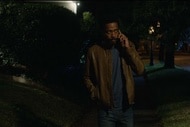Create a free profile to get unlimited access to exclusive videos, sweepstakes, and more!
Comics Wire: Marvel's distribution shake-up, AfterShock's YA imprint, & this week's hot reads

Welcome to Comics Wire, SYFY WIRE's weekly comics column that gets at the pulse of what's going on in comics right now. We've got what you need to know about huge crossovers, real-life issues facing the industry, cool first looks, the week's hot new comics, and everything in-between.
There was, without question, one major story in the comics industry over the past week, even taking into account the news that San Diego Comic-Con is going to attempt to mount an in-person event on Thanksgiving weekend. Last Thursday, Marvel Comics announced an impending new distribution agreement with Penguin Random House for comics heading to the Direct Market (meaning the comics you pick up every week at your local shop).
Beginning in October, Marvel will begin distributing all of its monthly comics, trade paperbacks, and graphic novels to comic book stores through PRH, marking another major break with Diamond Comics Distributors less than a year after the other half of the Big Two, DC Comics, launched its own new distributor agreements for the Direct Market.
That means that, for the first time in years, both Big Two publishers have developed alternative distribution methods to Diamond, which for many years held a near-monopoly on Direct Market comics distribution in North America. The implications of this are massive, and while we won't know the full scope of the impact until the changes kick in six months from now, it's all worth reflecting on as Marvel heads into a new era of Direct Market sales.
So, what does all of this mean for an average comics reader just heading into the store to pick up books? Hopefully not much. Retailers have six months to make the switch over to Penguin Random House to make sure their Marvel product keeps arriving, but even if they don't want to make the change, they don't have to. Diamond isn't leaving the Marvel game entirely. They'll still be around as a wholesaler, ordering Marvel product through Penguin Random House and then shipping it to stores. Unless something goes haywire in the months to come, you'll probably just keep right on getting your comics.
What this means for the wider world of comics retail is a little harder to parse, and reactions from retailers themselves have been mixed, as Newsarama's reporting on the subject showed. Some of them are die-hard Diamond customers who won't want to make the switch, while others are eager to test out the infrastructure and service of a major book distributor like Penguin Random House. In terms of the larger market, there's also the question of what this will mean for Diamond as a larger force in the Direct Market after years without major challengers.
They still have agreements with other major publishers, of course, some of them exclusive agreements that mean they'll be able to push product from smaller publishers in a bigger way, which means that books from the likes of Image, Dynamite, and other publishers might get more attention on a month-to-month basis. That said, Marvel and DC often account for more than two-thirds of Diamond's monthly business, and now that's taken another hit. It'll be a process of adaptation that will likely be fascinating to watch.
From where I sit, though, what's going to make this coming change especially interesting is how it'll continue to blur the line between comic book stores and independent book stores, which are already selling graphic novels and trade collections through companies like Penguin Random House and Hachette, often in bigger numbers than they ever have before. The graphic novel market, particularly for younger readers, is booming, and as anyone with a television will tell you, the superhero business isn't going anywhere either. When the news broke last week, Vault Comics publisher Damian Wassel summed it up by noting that "one of the world’s largest publishing conglomerates thinks there’s enough growth potential in comics and comic shops to bet vast sums of money on their collective future," and that's the way I see it too. Penguin Random House isn't just dumping comics into their book boxes.
They're spending real money on setting up a new partnership that will get them in comics shops at a time when they and other publishing houses continue to sign major agreements with indie comics publishers for trade and graphic novel distribution. If the adaptation process continues, and both retailers and customers are receptive to it, we could see comics shops thriving on the other side of all of this in a way they haven't before. It's still too soon to tell, but 2022 is going to be a very interesting year for the industry, even bearing in mind what the last two years have shown us.
AfterShock makes a Seismic YA impact
Hey, remember when I mentioned a moment ago that the comics business for young readers is booming? Well, the publishers have certainly noticed, which is why more and more of them are devoting resources to expanding their offerings for readers who aren't yet ready for more adult titles. This week one of the most exciting publishers in the game right now, AfterShock Comics, joined that expansion.
AfterShock announced Tuesday that it will launch Seismic Press, a new imprint of titles aimed at young adult readers, this summer, setting the stage for a bold new wave of genre titles for teens from the publisher that's brought you recent hits like Maniac of New York, The Kaiju Score, Lonely Receiver, Orphan Age and many more.
To launch this new imprint, AfterShock also announced the young adult title Rainbow Bridge, from co-creators and writers Steve Orlando (Commanders in Crisis) and Steve Foxe (Mr. Kazarian: Alien Librarian) and artist Valentine Brancati (Les Ravencroft). Rainbow Bridge tells the story of a boy on the edge of high school who visits the grave of his recently passed dog and finds a gateway to a magical realm where their roles are reversed, and it's his turn to play the guardian and guide to his best friend as he discovers his afterlife. It sounds like a tremendous mash-up of fantasy storytelling and coming-of-age emotion, and given the creative team it's hard not to see it as the start of something special.
Rainbow Bridge will arrive in August, and AfterShock has already teased more Seismic titles will soon follow, setting the stage for yet another major player in the growing young readers comics market. For more information, check out AfterShock's website.
More news: Marvel's Extreme Carnage, Vault gets Barbaric, and more!
- Right now, the Symbiote God Knull is ruling Marvel Comics via the King in Black event, but he's not the only Symbiote game in town. Knull's rampage will leave some of Marve's most popular symbiotic characters forever changed, and this summer writer Phillip Kennedy Johnson will explore just what those changes mean in Extreme Carnage, a new event arriving this July that promises to explore exactly what happened to Carnage and the Life Foundation symbiotes during their encounter with Knull, and what it means going forward. For more information on this just-revealed event, check out Marvel's website.
- Y'all know how much I love a high-concept fantasy comic, and last week Vault announced a doozy: Barbaric, a new and brutal fantasy title from The Plot co-creator Michael Moreci and Dark One artist Nathan Gooden. The series will follow Owen, a barbarian who's been cursed to spend the rest of his days wandering the world, bound to help anyone who asks him, with a little assistance from a sentient weapon known as Axe. The result? Pure fantasy mayhem, that's what. Barbaric arrives in June. Get a look at the wild art for the series over at CBR, where they exclusively revealed the book last week.
- This next upcoming title had me at the phrase "Halloween meets Jacob's Ladder." Last week Dark Horse Comics announced Cold Bodies, a new "meta-horror homage" graphic novel from writer Magdalene Visaggio (Vagrant Queen) and artist Andrea Mutti (Maniac of New York) that explores the aftermath of being part of a legendary slasher killing, and what it means when the world won't put your own past in the past even as you keep trying to bury it. The book will follow Denise Stokes, the survivor of a massacre that's now been made into a popular horror movie franchise, as the lines of reality blur around her while the anniversary of the killings looms. As a fan of Halloween in general and Halloween 2018 in particular, I can't wait for this. The book arrives in September, and more details are available at Dark Horse's website.
- Looking for a new comics Kickstarter to back? I've had my eye on two that have launched in the course of the last few days. The fine folks at Ominous Press are looking for funding for The Dusk, a new superhero graphic novel from the minds of Alex Segura, Elizabeth Little, and David Hahn that looks to offer a "modern reimagining of the superhero vigilante that flips the script on the traditional 'might makes right' approach while adding the grounded, socially conscious perspective that modern crime fiction has become known for." Ten bucks will get you the first of four single-issue chapters, while $20 will get you a digital copy of the whole graphic novel.
- If something in the tokusatsu vein is more your speed, you'll want to check out the just-launched Inferno Girl Red from writer Mat Groom (who knows a thing or two about tokusatsu thanks to his time with Marvel's Ultraman comics) and artist Erica D'Urso. Bringing together influences ranging from Into the Spider-Verse to British boarding school stories, this graphic novel tells the story of a young girl, her magical dragon bracelet, and a demon army that's taken over her home. About ten bucks will get you a digital copy of the story next year.
New comics this week: Beta Ray Bill, Witchblood, and more!
That's the news. Now let's talk about some of the comics I got excited about this week.
Beta Ray Bill #1: Even before I got to look at some preview pages earlier this month, the new Beta Ray Bill miniseries from writer/artist Daniel Warren Johnson was among my most-anticipated new superhero books of this year, both because of the glorious inventiveness Johnson displayed on Wonder Woman: Dead Earth and because of the potential I saw in the series explicitly tackling Bill's place as Thor's backup in the Marvel Universe. This is a character who was introduced with an epic, tragic backstory of his own, and yet he's so often framed as Thor's horse-faced-alien best friend that we sometimes lose sight of the tremendous weight Bill carries with him. With all that in mind, the first issue of this series delivers an absolute smash that carries that kind of epic thematic oomph with confidence and flair.
What begins with a King in Black tie-in, as Bill leads an army of Asgardians to take on a Knull-possessed Fin Fang Foom, quickly shifts to something more, as Johnson's script begins to reckon with Bill's own doubts about his place in this particular world. For years he's walked alongside Asgardians, carried their weapons, carried the blessing of Odin himself, but what happens when some of that is stripped away, and the pull of what he used to be is still there? What happens when Bill stares back into those same emotional depths he carried with him when Walt Simonson first introduced him decades ago?
That's the core of this story, and Johnson both understands and revels in it. His script is a devastating blend of all-out action and deep emotional resonance, and like Simonson before him he understands how to wield both in the span of a moment. Add that to his art, which delivers page after astonishing page of Asgardian bombast, and this becomes a must-read new chronicle of one of Marvel's most fascinating supporting heroes.
Witchblood #1: The thing about big, conceptual genre stories is that they very often lead with the genre elements themselves. There's nothing wrong with this approach, but it does mean winning readers over something flashy first, then keeping us hooked with character. It's somewhat rarer, at least in my experience, to come across a story heavy on genre elements that's willing to lead with personality. Yet that's exactly what Witchblood, the new Vault Comics series from writer Matthew Erman and artist Lisa Sterle, does in its opening pages, and the result is something absolutely enchanting.
As the name suggests, theres a lot of genre fun to be had in Witchblood, a Southwestern road fantasy about a witch who runs afoul of a gang of biker vampires who'd like to suck all the magic right out of her veins. Erman and Sterle absolutely revel in these elements, but there's something about this story and its wild mix of influences that needs to be anchored in a character first. In this case, that's Yonna, a plucky witch with nothing but a bird familiar and a beloved motorycle for her traveling companions, who wanders into a small Texas town and gets a lot more than the repairs she was hoping to bargain for.
Before the vampire bikers, before the fight scenes, before the spells and the big plot setups, Erman and Sterle take a moment to let us simply sit with Yonna and understand her, and it makes all the difference. She's an instantly likable, unmistakably charismatic new presence in comics, and the sheer force of her character combined with Sterle's absolutely entrancing art make this a must-read new fantasy series. It pops like nothing else on the stands right now, but even after you're done staring at the art, you'll still be thinking about the personalities within.
Shadecraft #1: I love stories that can balance light and dark, humor and horror, particularly when the blend is so seamless that you don't realize the mood of what you're reading has shifted until you're leaning a little closer to the page, heart rate quickened, hanging on whatever comes in the next panel. Shadecraft, the new Image series from the Skyward creative team of writer Joe Henderson and artist Lee Garbett, is that kind of book.
The debut follows Zadie, a teenager in Illinois who's pretty sure the shadows around her are coming alive and trying to attack her. This, combined with her family's grief over an accident that left her brother in a coma, makes life pretty rough on a baseline level. Throw in the crush she's struggling with and the fact that none of her classmates believe her supernatural encounters, and it's not an easy teenage existence.
As they did with Skyward, Henderson and Garbett strike an immediate balance between the very real, relatable concerns of Zadie's life and the more supernatural ones, as she tries to balance the very human struggles of her daily existence with...you know, monsters make of darkness reaching out to swallow her. That imbues the book with an immediate sense of heart and humor, something the wonderful facework in Garbett's art drives home in page after page. Shadecraft #1 ends with a very intriguing hook that sends the rest of the series into must-read territory for me, but what I'm even more impressed by after reading it is the storytelling philosophy that radiates out from its title: A delicate, precise application of shade into a story filled with light around the edges, and a beautiful display of comics craft.
The Final Girls #1: A great many superhero stories, often the best ones, boil down to answering a simple question: What do you do with the power you have? Spider-Man put that question right in his decades-old mission statement, and just about every great Superman story contends with this idea at one point or another. It's also the question at the heart of the new ComiXology Original series The Final Girls from writer Cara Ellison and artist Sally Cantirino. In this case, the answer to that question is complicated, and it opens the door to a compelling journey of power, privilege, vengeance and raw emotion.
The Final Girls of the title were once a powerful superhero team, but government regulations in the world of super-powered people drove them into retirement. Now, they exist on the edges of the professional superhero world, though some of those closest to them are still a major part of it. One of those heroes, among the most powerful male supers in the world, just did a very bad thing, and The Final Girls have been called upon to do something about it. But how do you stop one of the most popular beings on the face of the planet?
This may seem a simple metaphor on its surface, and indeed Ellison's script makes no secret of the real-world issues it hopes to probe, but what makes The Final Girls stand out is the places it's willing to go with these particular superheroic allegories. Driven by Cantirino's powerful, emotive art, this is a story about the ways in which weapon are asked to literally carry the emotional burden of the world, often at great personal pain, the toll that takes, and what comes after. That's a heavy subject for a superhero book, but the result is both entertaining and completely engaging on a pure genre fiction level. Don't miss this one.
The Flash #768: As a Wally West guy, the past couple of years of Flash stories have...not been easy for me, because Wally's been through an awful lot. Whether we're talking about Heroes In Crisis, Dark Knights: Death Metal or any number of other major shifts, my preferred version of the Fastest Man Alive has been put through the wringer lately. So I was pleased to find that the Infinite Frontier era of DC Comics seemed poised to do something about that, to bring Wally back to his classic speedster form and put him on the path to some new adventures. Now the first issue of his the new Flash era -- from writer Jeremy Adams and artists Brandon Peterson, Marco Santucci, and David Lafuente -- has landed, and I'm pleased to say that I feel very optimistic about where Wally is heading.
The challenge with kicking off a new era with this particular character at this particular time is that there's still a lot of baggage tied to Wally West, and it's hard to go without addressing. That's why, as the solicit copy gives away, Wally is eyeing retirement from being The Flash rather than taking the mantle back from Barry or even sharing it with Barry. That means a goodbye is in order, but as any longtime reader of Flash comics will tell you, it's never as simple as one last run.
The very nature of picking up all of the pieces of Wally West's personal continuity at this point in his career means that this is an issue that has to tackle a lot all at once, which means that perhaps the highest compliment I can pay it is just how seamless it is. It doesn't read like a creative team trying to check a bunch of stuff off a list, but rather a story with real emotional stakes complicated by typical (but nonetheless entertaining) Flash shenanigans. In short, this is a very promising start, and I'm eager to see where this era of Wally West's career goes next.
And that's it for Comics Wire this week. Until next time, remember what John Custer told his son Jesse in the pages of Preacher:
"You gotta be one of the good guys, son: 'Cause there's way too many of the bad."





























